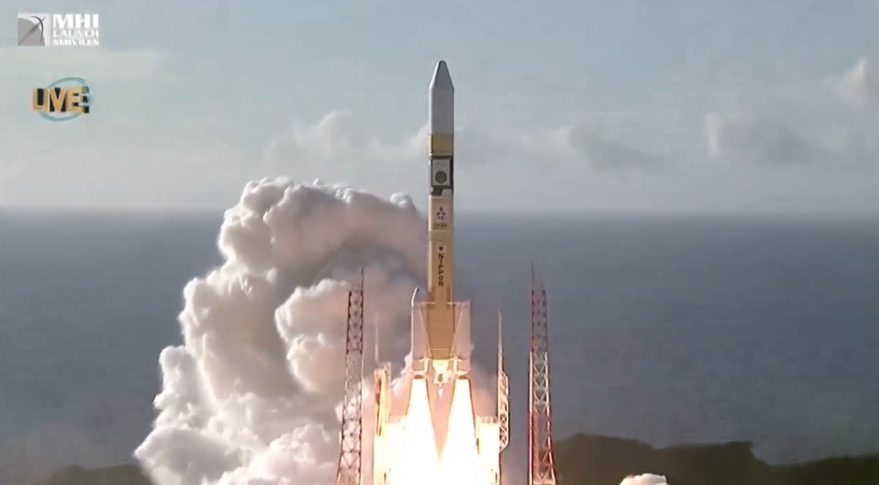UAE’s Hope mission on its way to Mars
UAE’s Hope mission on its way to Mars

WASHINGTON — A Japanese rocket launched the United Arab Emirates’ first mission to Mars July 19, an orbiter that will study the planet’s weather while demonstrating the country’s growing space capabilities.
The H-2A rocket lifted off from the Tanegashima Space Center in Japan at 5:58 p.m. Eastern. The launch was originally scheduled for July 14 but delayed five days by poor weather at the launch site.
The rocket’s upper stage released the Emirates Mars Mission, or Hope, spacecraft, nearly an hour after liftoff. The spacecraft contracted controllers shortly after separation.
Hope is a 1,350-kilogram satellite developed by the Mohammed bin Rashid Space Centre (MBRSC) in the UAE. The spacecraft will arrive at Mars in February 2021 and go into an initial elliptical orbit between 1,000 and 49,380 kilometers above the planet. It will later move into its desired orbit for science observations, with altitudes ranging from 20,000 to 43,000 kilometers.
Development of Hope started in late 2013 as the next phase in the country’s effort to grow its space capabilities, after development of a series of Earth observation spacecraft. “They wanted us to take it to the next level,” said Omran Sharaf, project manager for Hope. “They wanted us to create a career path for scientists.”
Hope carries three instruments: a camera, infrared spectrometer and ultraviolet spectrometer. The spacecraft will provide data on the Martian atmosphere, including monitoring weather and climate to a greater degree than past Mars orbiter missions by the United States and other nations.
“One of the requirements very early on was to send a mission that does more than capture an image declaring that the UAE reached Mars,” said Sarah al-Amiri, UAE minister of state for advanced sciences and deputy project manager for Hope. “We are the very first weather satellite for Mars.”
The UAE is not doing Hope entirely on its own. Besides purchasing the H-2A launch from Japan’s Mitsubishi Heavy Industries, MBRSC partnered with several universities in the United States, such as Arizona State University, the University of California Berkeley Space Sciences Laboratory and the Laboratory for Atmospheric and Space Physics (LASP) at the University of Colorado. Those universities collaborated on the spacecraft and its instruments.
That partnership included building and testing Hope at LASP’s facilities in Colorado. “Our partners at LASP have been key to ensuring the success of the mission, delivering an extraordinary spacecraft in almost half the time of conventional missions but also in providing the resources and knowledge we need to drive our own development of space systems engineering and planetary science,” Sharaf said.
“Hope will capture the ebbs and flows of weather on Mars to a degree that wasn’t possible before,” said Daniel Baker, director of LASP, in a statement. “It’s a showcase for how space exploration has become an increasingly international endeavor.”
NASA is also supporting the mission by providing Hope access to the Deep Space Network for communications. “Today marks the culmination of tremendous hard work, focus, and dedication, as well as the beginning of the UAE’s journey to Mars,” NASA Administrator Jim Bridenstine said in a post-launch statement. “All of us at NASA are excited about the prospects for ambitious future partnerships with the UAE in low Earth orbit and, via the Artemis program, on and around the moon with the ultimate destination of Mars.”
Hope is the first of three Mars missions scheduled to launch over the next two weeks. China is expected to launch its Tianwen-1 Mars mission, which features an orbiter, lander and rover, on a Long March 5 July 23. NASA will launch its Mars 2020 mission, carrying the rover Perseverance, on July 30 on an Atlas 5 from Cape Canaveral, Florida.
Comments
Post a Comment